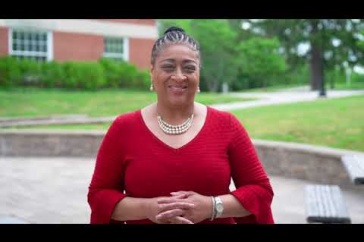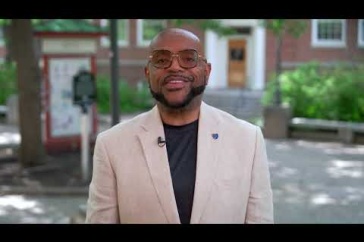
In the days since a 7.8-magnitude earthquake ravaged Nepal, the death toll has climbed to more than 7,500. Homes, businesses, schools and other buildings now lie in rubble — an estimated 2.8 million people have been displaced.
For the Nepalese students attending UNH, waking up the morning of April 25 brought immediate panic, as they tried to reach family members and friends in their home country.
"My cousins, my aunt, my grandparents all live in Kathmandu. That morning I couldn't communicate with them, and the death toll was rising. I was very nervous," says Ruchit Khadka '17. "Thankfully, no one was hurt, but the houses crumbled, and they are all living outside in tents."
In response to the devastation in their home country, these students hosted a candlelight vigil Friday evening, May 1, to share their personal stories with their fellow students and also to raise money for Nepal. The event, held with support from the Office of Multicultural Affairs and the United Asian Coalition, drew a crowd of about 50 students and faculty members, who each lit a candle and observed a moment of silence for the earthquake victims.
As Huy Le ’17, head of the United Asian Coalition told the crowd, "It's been a beautiful day here at UNH, but there is a darkness over Nepal," as the rescuers search for survivors and the Nepalese people begin to deal with the devastation.
Shreya Rana '17 grew up in Kathmandu before her family moved to Dubai during her high school years.
"My family is OK, but it's too dangerous to be inside. Aftershocks are still happening, and they can go up to 6.1 or 6.5. So they are all outside in tents," she says. "Our city is so old, even a little bit of shaking can knock over buildings."
Rana says Nepal appreciates the foreign aid that's already pouring into the country, but notes that funds — or even rescue missions or emergency crews — haven't been able to make it out to rural areas yet. Her family is doing what they can; her aunt and uncle are making small care packages of food, water, medicine and clothing that her cousin and his friends are taking out to the villages.
And while such tragedies seem to strike randomly, UNH earthquake expert professor Margaret Boettcher points out that earthquakes of this magnitude and in this area are pretty well known to the scientific community.
 |
| Prof. Margaret Boettcher |
Nepal lies in an active seismogenic zone, Boettcher points out, because the tectonic plate under India is shifting into Asia at a rate of about twice as fast as our fingernails grow. If that sounds slow, it is — but as evidenced by the Nepal earthquake, the geological results of such a collision can be disastrous.
While plates shift around the world, this area is the most active in terms of two continents coming together (other dramatic plate shifts are occurring under oceans).
"It's a surprise to see exactly when these earthquakes happen, but it's not a surprise where or how big. We know large earthquakes will happen in this area," says Boettcher, who's been teaching geology and seismology at UNH since 2009. And the long-term predictability is quite good — research shows that they will occur about every 700 years, give or take a couple of centuries.
Something that has made this earthquake so devastating, she says, is that Kathmandu isn't sitting on solid rock, it's sitting on a basin of about 2,000 feet of soft sediment — making the shake feel even worse. As Boettcher explains it, the Nepal earthquake's energy traveled up through a solid layer of rock, which keeps the "shake" relatively small. But once it hit the sediment under the capital city, the shake became more dramatic, and building collapse was more prevalent.
In addition to selling wristbands that read "UNH FOR NEPAL" for $1 (all proceeds are going to UNICEF), the vigil organizers are encouraging those who want to help to share their stories.
"I just want people to spread the word. Use Facebook, use Twitter, anything," says Khadka. "People look at the news, they feel it for five minutes and then move on, because they have other things going on. But in those five minutes, I want them to know what's really happening. In those five minutes, even if they donate just a dollar, that would go so far in Nepal; it would mean a lot."
Click on any of the photos below to see the gallery of the candlelight vigil.
-
Written By:
Staff writer | Communications and Public Affairs



















































